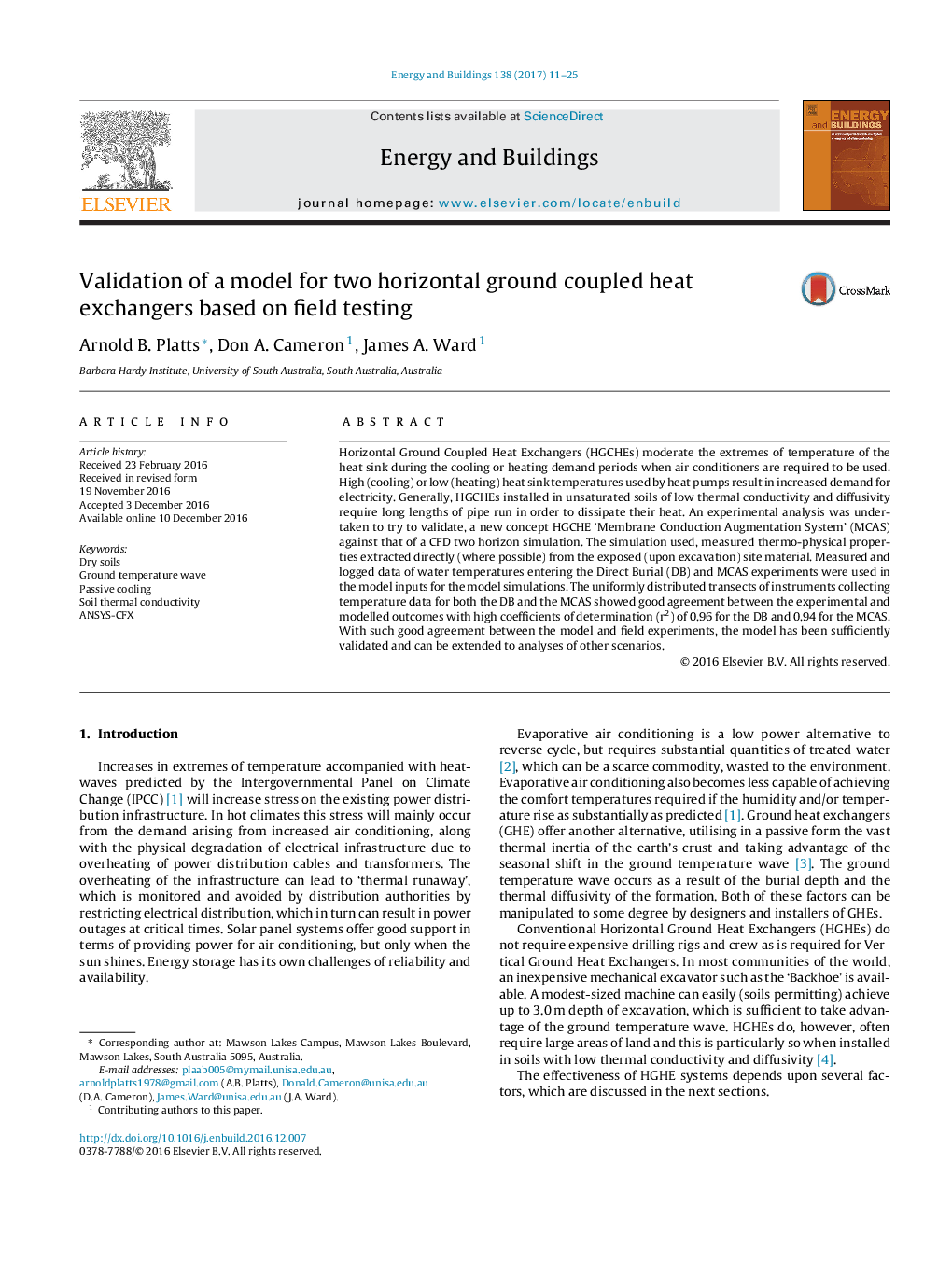| Article ID | Journal | Published Year | Pages | File Type |
|---|---|---|---|---|
| 4919417 | Energy and Buildings | 2017 | 15 Pages |
Abstract
Horizontal Ground Coupled Heat Exchangers (HGCHEs) moderate the extremes of temperature of the heat sink during the cooling or heating demand periods when air conditioners are required to be used. High (cooling) or low (heating) heat sink temperatures used by heat pumps result in increased demand for electricity. Generally, HGCHEs installed in unsaturated soils of low thermal conductivity and diffusivity require long lengths of pipe run in order to dissipate their heat. An experimental analysis was undertaken to try to validate, a new concept HGCHE 'Membrane Conduction Augmentation System' (MCAS) against that of a CFD two horizon simulation. The simulation used, measured thermo-physical properties extracted directly (where possible) from the exposed (upon excavation) site material. Measured and logged data of water temperatures entering the Direct Burial (DB) and MCAS experiments were used in the model inputs for the model simulations. The uniformly distributed transects of instruments collecting temperature data for both the DB and the MCAS showed good agreement between the experimental and modelled outcomes with high coefficients of determination (r2) of 0.96 for the DB and 0.94 for the MCAS. With such good agreement between the model and field experiments, the model has been sufficiently validated and can be extended to analyses of other scenarios.
Related Topics
Physical Sciences and Engineering
Energy
Renewable Energy, Sustainability and the Environment
Authors
Arnold B. Platts, Don A. Cameron, James A. Ward,
